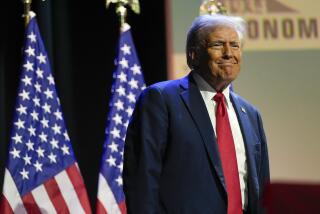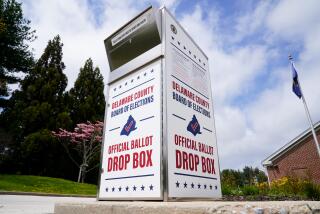Negative ads increase dramatically during 2012 presidential election
- Share via
A study by Wesleyan University shows a staggering leap in negative advertising during the 2012 presidential campaign, coinciding with a huge growth in spending by outside groups eager to influence voters.
In a campaign that already has been noted as particularly hostile, the vitriol of the rhetoric so far has reached a seemingly unprecedented level. At this point in 2008, 9% of ads were classified as negative. So far in the current race, 70% of the ads have been negative ads.
There are many variables that have driven the change. There’s an incumbent president seeking reelection with a substantial war chest and a campaign infrastructure in place. The Republican field was particularly contentious, sparking plenty of negative ads as Mitt Romney fended off major challenges from Rick Santorum and Newt Gingrich. But most of all, recent federal court decisions – including the Supreme Court’s ruling in the Citizens United case -- opened the door to wealthy individuals and companies being allowed to legally donate unlimited sums of money to “super PACS.”
Both the hostility and the sheer number of ads originating from outside groups skyrocketed over the last four years. In 2008, 25% of the ads from those groups were negative. So far during this election cycle, that number has increased to 86%.
That’s not to excuse the candidates from any of the blame in shifting their tones. They have ramped up their negative campaigning as well, from 8.6% in 2008 to 52.5%.
But it’s the ratio between candidate and independent ads that accounts for the enormity of the shift. In 2008, interest groups accounted for 3.36% of ad purchases. So far in 2012, they are responsible for 59.4%. That’s a 1,123% increase in volume, accompanied by a 1,139% increase in spending, from $6.3 million in 2008 to $77.5 million in 2012.
“Such levels of outside group involvement in a presidential primary campaign are unprecedented,” said Travis Ridout, co-director of the Wesleyan Media Project. “This is truly historic. To see 60% of all ads in the race to date sponsored by non-candidates is eye-popping.”
During the Republican primary, the influence of super PACs was particularly noteworthy. Along with showing the inundation of ads from the Romney campaign, Wesleyan’s study also shows the degree to which the candidates relied on super PACs to shoulder their advertising burdens. Sixty-four percent of Gingrich’s and Santorum’s ads came from super PACs, and 62% for Romney. President Obama, whose campaign’s super PAC initiatives have gotten off to a slow start, had nearly 19% originating from them. Ron Paul had less than 9% of his ads coming from super PACs.
Through the combined efforts of his campaign and super PACs, Romney aired nearly 80,000 ads. No one, not even Obama, has aired more than 18,000.
The data from the two elections was collected from Jan. 1, 2007, to April 22, 2008, and from Jan. 1, 2011, to April 22, 2012, by the Wesleyan Media Project and Kantar Media/CMAG.
For the full results of the study, click here.
Original source: Negative ads increase dramatically during 2012 presidential election
More to Read
Get the L.A. Times Politics newsletter
Deeply reported insights into legislation, politics and policy from Sacramento, Washington and beyond. In your inbox three times per week.
You may occasionally receive promotional content from the Los Angeles Times.










